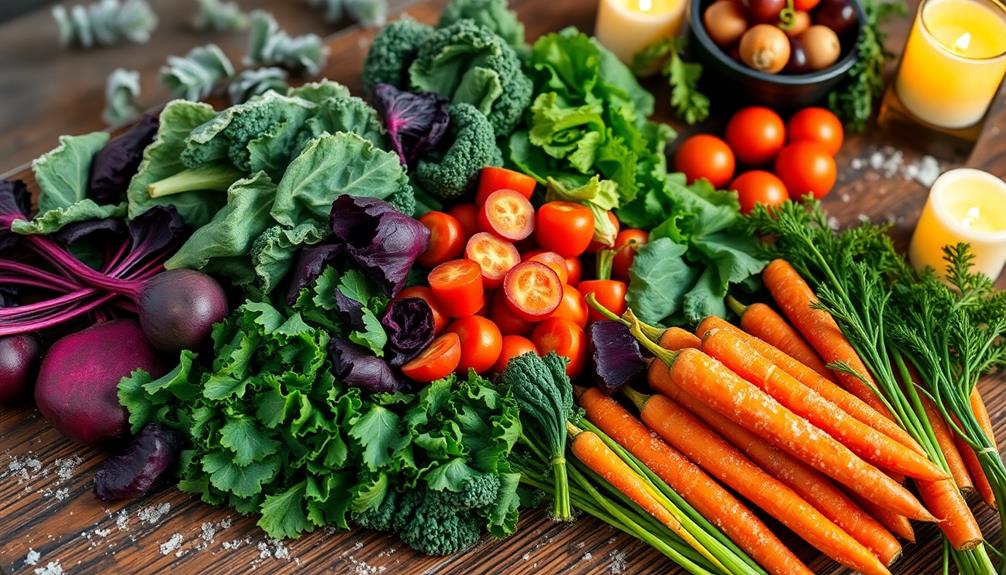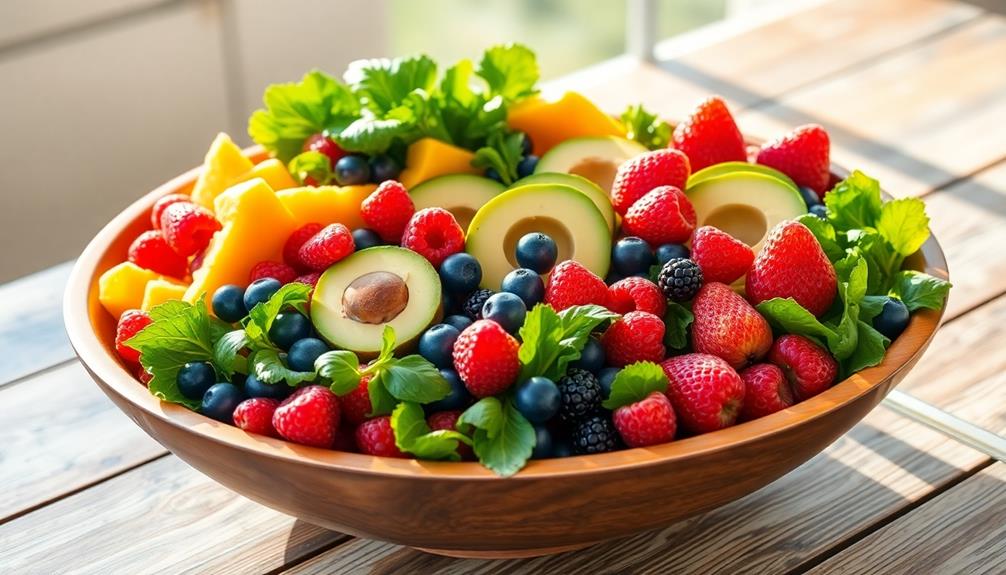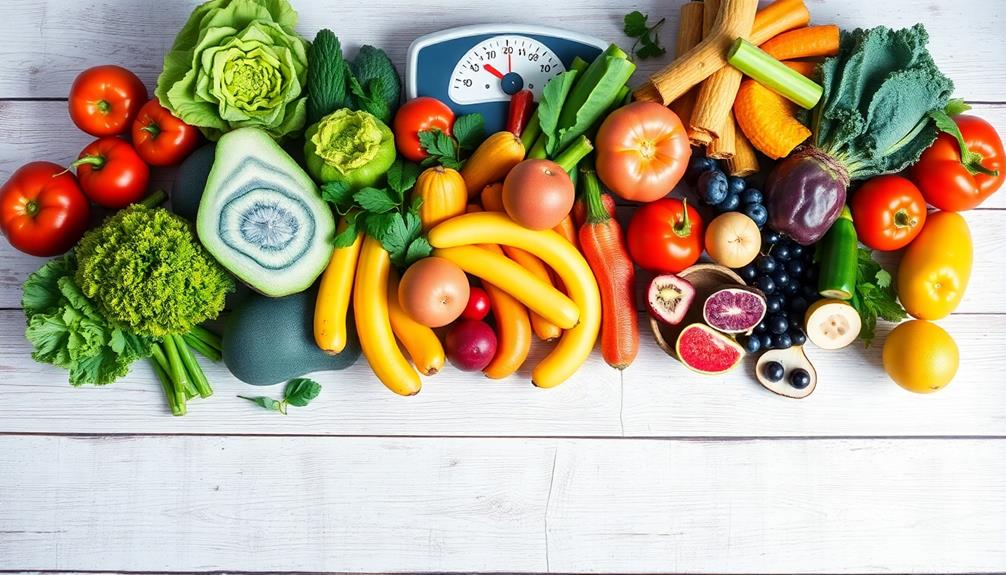Eating seasonal raw foods in winter can boost your health and help you enjoy flavorful meals while supporting local farmers. Focus on nutrient-rich options like citrus fruits, apples, pears, root vegetables, and hearty greens. These foods are packed with vitamins A and C, which can strengthen your immune system during cold months. Incorporate warming spices and create raw snacks for a delicious twist. Choosing seasonal produce not only enhances your diet but also contributes to local economies and reduces your carbon footprint. Stick around, and you'll discover even more tips and ideas to elevate your winter raw food eating experience.
Key Takeaways
- Incorporate hearty greens like kale and collard greens for nutrient density and versatility in raw winter dishes.
- Use citrus fruits to add brightness and essential vitamin C to your raw meals during winter.
- Prepare raw snacks such as kale chips and energy bites for nutritious, convenient options that energize you.
- Combine winter root vegetables like carrots and beets in salads for added texture and nutrition.
- Experiment with warming spices like ginger and cinnamon in raw recipes to enhance flavor and warmth.
Benefits of Seasonal Eating
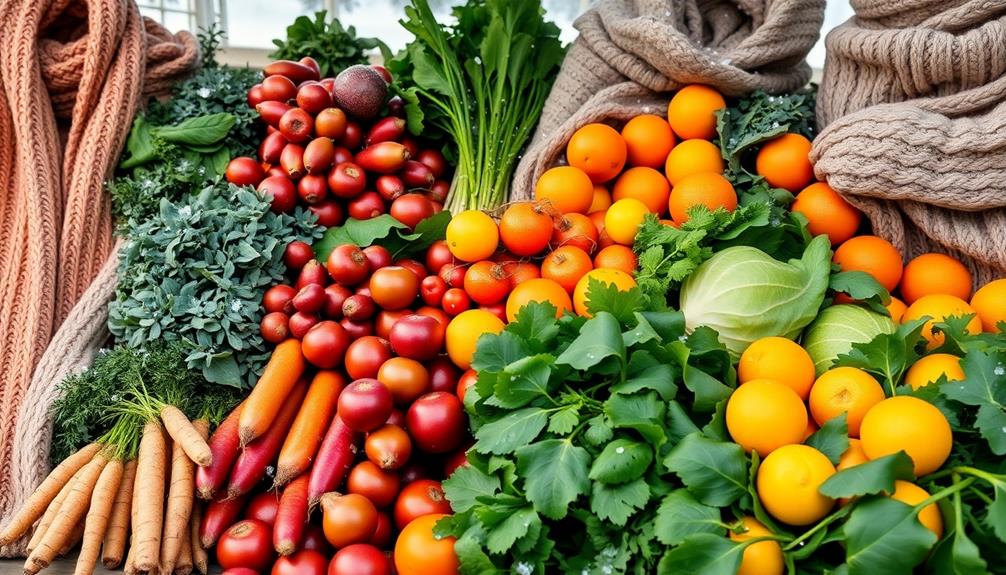
When you choose to eat seasonally, you reveal a host of benefits that can enhance your overall health and enjoyment of food. Seasonal foods are harvested at their peak ripeness, meaning they're packed with more vitamins and minerals than out-of-season options.
You'll notice the difference in flavor, too—fresher produce from your local farmers market often tastes far superior, making meals more satisfying. Additionally, incorporating seasonal foods can support mental well-being, similar to how aromatherapy can enhance mood through natural scents.
By supporting local farmers, you're not just enjoying better food; you're also strengthening local economies and reducing your carbon footprint. Eating in sync with the seasons encourages biodiversity, leading to healthier ecosystems that can benefit your community and the planet.
Plus, seasonal produce usually comes at lower prices, giving you a chance to save money on your grocery bills.
Another major perk? Seasonal foods can give your immune system a boost. Foods in season often have nutrients that align with the body's needs throughout the year, helping you stay healthy and energized.
Winter Seasonal Produce Guide
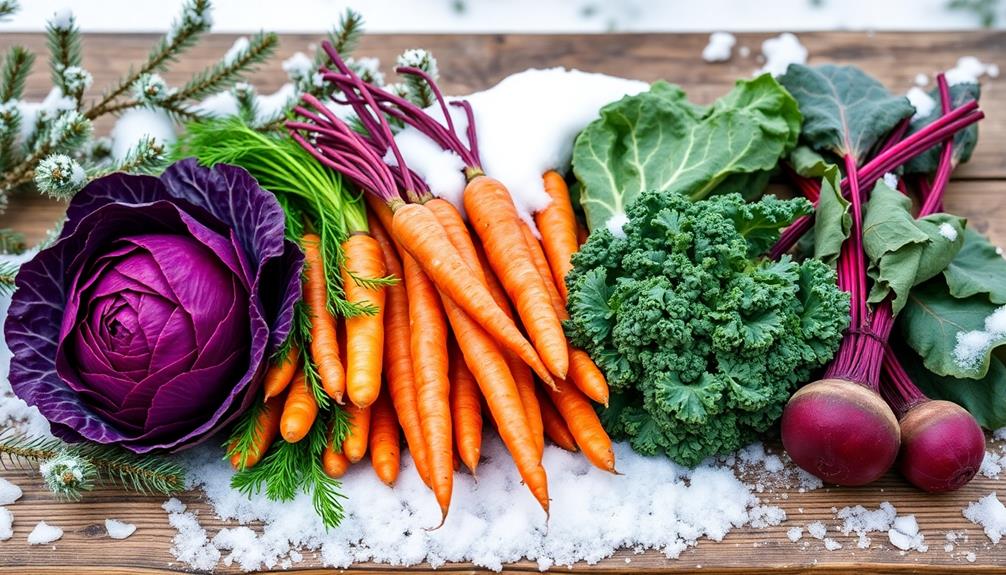
Eating seasonally during winter opens up a world of vibrant produce that's not only delicious but also packed with nutrients. You'll find an array of seasonal fruits and vegetables that can transform your raw food meals. Citrus fruits like oranges, grapefruits, and lemons are at their peak, delivering essential vitamins to help you stay refreshed during the colder months.
Apples and pears also make great additions, offering a crisp texture and natural sweetness.
When it comes to vegetables, root varieties such as carrots, potatoes, and beets shine in winter. Hearty greens like kale and collard greens are nutrient-dense and versatile for your raw dishes.
Don't overlook winter squash, including butternut and acorn, which provide a rich source of fiber and vitamins.
Shopping at grocery stores that prioritize local produce can enhance your culinary experience, as these seasonal ingredients are often more abundant and affordable.
Using a winter seasonal produce guide helps you identify fresh, local options, making it easier to incorporate nutritious elements into your diet while supporting local farmers and economies.
Embrace these winter offerings for a healthy, vibrant raw food experience!
Nutritional Advantages of Winter Foods
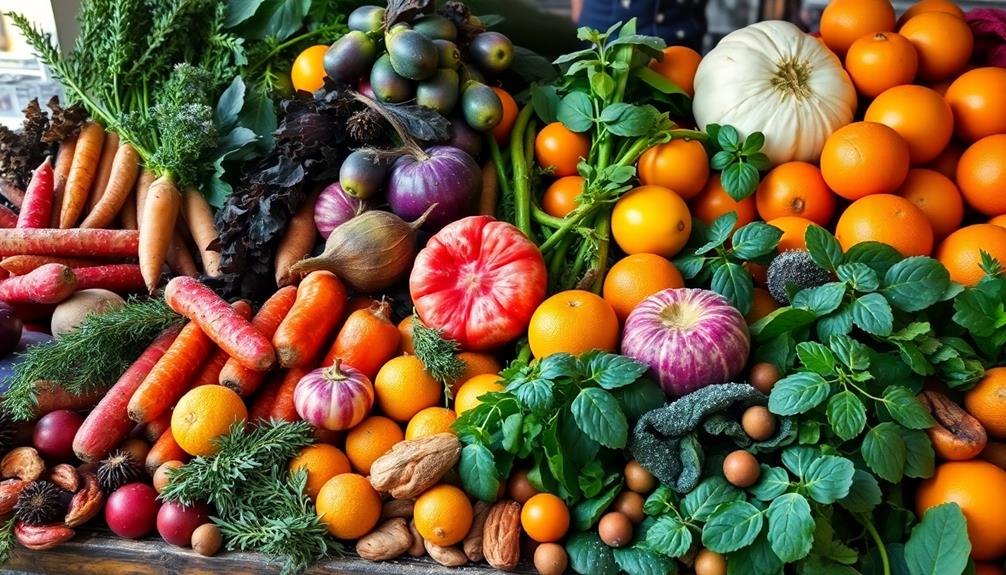
Winter foods offer numerous nutritional advantages that can help you stay healthy during the colder months. By eating seasonally, you can enjoy a bounty of fruits and vegetables that are rich in vitamins A and C, essential for boosting your immune function. Citrus fruits and root vegetables are excellent choices, as they provide a significant dose of Vitamin C to fend off winter illnesses.
Additionally, incorporating nutrient-dense foods like chia seeds can enhance your diet; these seeds aren't only high in fiber, aiding digestion, but also rich in omega-3 fatty acids, supporting heart health and chia seeds and digestive health.
Consuming seasonal produce like kale and Brussels sprouts not only adds fiber to your diet but also aids digestion and keeps you feeling full, which can help manage those winter cravings. You'll also benefit from higher nutrient retention in locally sourced winter produce, as these foods are harvested at their peak ripeness.
Don't forget the incredible antioxidants found in leafy greens and winter squash, which can reduce inflammation and support overall health. Incorporating a variety of winter fruits and vegetables, such as apples and beets, guarantees you're eating the rainbow and getting a diverse intake of nutrients.
Cooking Tips for Winter Meals

The beauty of seasonal ingredients shines in your winter meals, making them both nutritious and satisfying. When you're grocery shopping, stock up on root vegetables like carrots and beets, which are high in fiber and vitamins. These versatile veggies can be enjoyed raw in salads or spiralized for a hearty texture that's perfect for winter.
Additionally, be mindful that raw beets can cause throat irritation due to oxalates, so cooking them may be a gentler option for your digestive health nutritional benefits of beets.
Don't forget to incorporate citrus fruits, such as oranges and grapefruits, which add brightness to your dishes while providing a boost of Vitamin C. Experimenting with warming spices like cinnamon and ginger can elevate your flavors, making your meals even more comforting during the colder months.
Using a dehydrator is another great tip. Blend your favorite raw ingredients and gently warm them to create delicious soups or stews without conventional cooking methods. Not only does this retain nutrients, but it also gives you a cozy meal.
Lastly, think about creating satisfying raw snacks to enjoy throughout the day. Kale chips seasoned with nutritional yeast or energy bites made from dates and nuts are nutrient-dense options that will keep you energized.
Embrace these tips and enjoy the rich flavors of your winter harvest season!
Community Support for Seasonal Eating

Community support plays an essential role in embracing seasonal eating. When you participate in local farmers' markets, you not only access fresh, seasonal produce but also strengthen community ties and support local economies. Community-supported agriculture (CSA) programs are another fantastic option, delivering seasonal produce directly to your doorstep while fostering connections with local farms.
Here's a quick overview of ways to engage with your community for seasonal eating:
| Activity | Benefits | How to Get Involved |
|---|---|---|
| Farmers' Markets | Fresh produce, community engagement | Visit your local market weekly |
| Community-Supported Agriculture | Regular seasonal produce, support local farms | Sign up for a CSA program |
| Sharing Seasonal Recipes | Knowledge sharing, collaborative cooking | Join online groups or local workshops |
Volunteering at food banks can also help distribute seasonal foods to those in need, raising awareness about food availability in your community. Finally, engaging in workshops focused on seasonal cooking can enhance your culinary skills while building a network of like-minded individuals passionate about sustainable eating.
Frequently Asked Questions
How to Eat Raw in the Winter?
To eat raw in winter, focus on warming foods like root vegetables and increase your caloric intake with nuts and seeds. Experiment with herbal teas and enjoy seasonal citrus fruits for added immunity and flavor.
What Are the 4 Seasonal Foods?
Ever wonder what's vibrant in winter? You'll find citrus fruits like oranges, crisp apples, hearty root veggies such as carrots, and nutrient-packed leafy greens like kale. These seasonal foods boost your health and delight your palate!
Which Food Is Good for Winter Season?
During winter, you'll benefit from consuming citrus fruits for Vitamin C, root vegetables for fiber, and squash for healthy fats. These foods boost your immune system and keep your energy levels up in colder months.
How Do You Eat Produce Seasonally?
Eating seasonally's like dancing with nature; you'll savor fresher flavors. Start by visiting farmers' markets, check seasonal guides, and plan meals around in-season produce. Experiment and preserve to enjoy vibrant nutrition all winter long.
Conclusion
By embracing seasonal raw food eating in winter, you're not just nourishing your body; you're connecting with nature's rhythm. Imagine a sturdy tree, shedding its leaves to conserve energy, yet thriving in the cold. Just like that tree, you can adapt your diet to the season's bounty, fueling yourself with vibrant, nutrient-rich produce. So, grab those winter veggies, and let them inspire your meals. You'll feel revitalized, grounded, and ready to flourish, no matter the chill outside.

